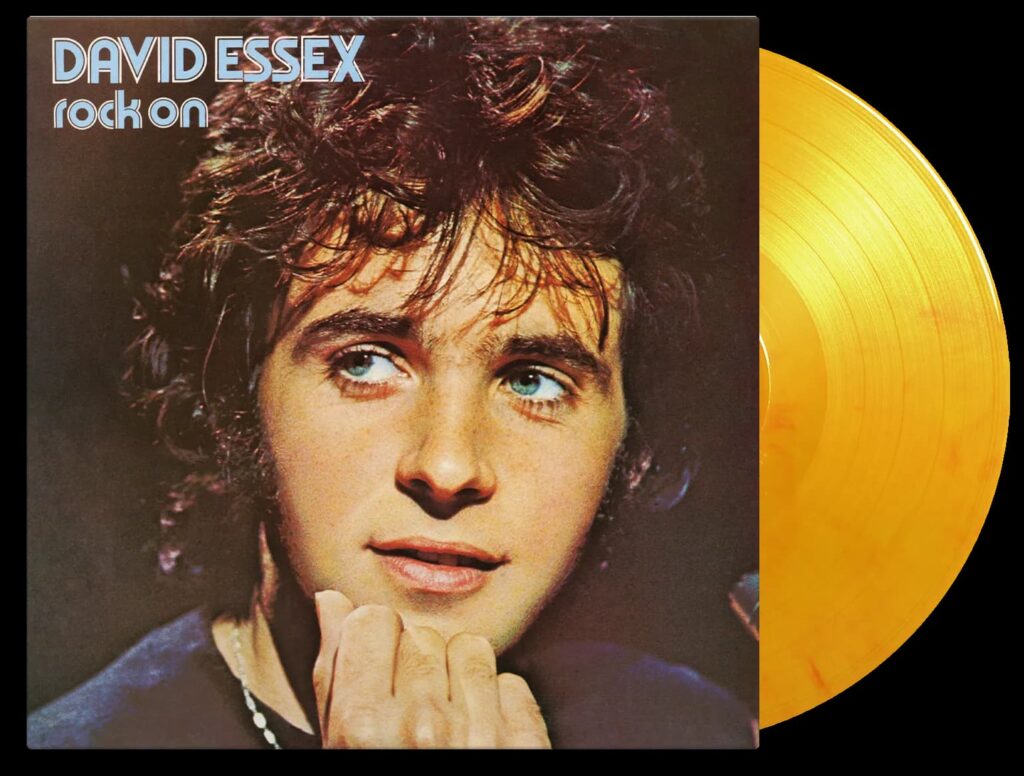
Echoes in the Alley: The Glam-Rock Spectre of Rock ‘n’ Roll’s Lost Promise
The year was 1973. The psychedelic dream had dissolved into a cynical haze, and the glitter-encrusted strut of Glam Rock was giving the decade its signature flair. Emerging from this backdrop, a record arrived that didn’t just join the party—it stood slightly apart, bathed in a strange, echoing light. That song was “Rock On”, and the singer who delivered its minimalist, brooding invitation was the English actor and burgeoning pop idol, David Essex.
Released in the UK in August 1973, “Rock On” immediately resonated, peaking at Number 3 on the UK Singles Chart, establishing David Essex as a serious musical force following his starring role in the film That’ll Be the Day. Across the Atlantic, the song achieved even greater peak success, climbing to Number 5 on the U.S. Billboard Hot 100 chart in March 1974, becoming Essex’s sole Top 40 hit in America, though it had already hit Number 1 in Canada on the RPM chart. It was the lead single and title track from his critically acclaimed debut studio album, also named “Rock On”, which itself reached Number 7 on the UK Albums Chart and Number 32 on the US Billboard 200.
The remarkable story behind “Rock On” is woven into its very sound, a stark, unsettling, and almost skeletal arrangement conceived by producer Jeff Wayne (who would later gain fame for Jeff Wayne’s Musical Version of The War of the Worlds). Essex brought him the raw song, originally a spare vocal and a beat banged out on a trashcan for rhythm, according to Wayne. This initial, hollow demo inspired the producer to strip the track of virtually all chord-playing instrumentation. The resulting sonic masterpiece relies almost entirely on the hypnotic, throbbing, and famously double-tracked bassline of session legend Herbie Flowers, which is treated with a prominent ‘slapback’ delay. There are no traditional guitars or keyboards—just that mesmerizing bass, minimalist drums, and the otherworldly punctuation of a string section and the Ondes Martenot, creating an atmosphere Dave Thompson of AllMusic called “instantaneously established among the defining songs of the 1970s.”
The meaning of “Rock On” is a wistful, almost melancholic farewell to the innocence and rebellious promise of 1950s rock and roll, viewed through the lens of a weary 1970s. It’s an elegy disguised as a rock song. Essex himself was immersed in the rock and roll revival atmosphere while starring in That’ll Be the Day, and the lyrics are riddled with nostalgic, almost ghostly references: “blue suede shoes,” “summertime blues,” and most poignantly, the repeated invocation of the decade’s tragic icon, “Jimmy Dean.” The song isn’t a simple tribute; it’s a commentary, a question mark hanging over the legacy of rebellion. Lines like, “And where do we go from here? Which is the way that’s clear?” capture a profound sense of disillusionment and searching that resonated with a generation coming of age as the idealism of the 1960s crumbled.
For those of us who remember the era—when the radio waves seemed to carry both the raucous excitement of Glam and the distant echoes of Rock ‘n’ Roll’s foundation—“Rock On” remains a singular, essential artifact. It’s the sound of a past era fading and a new one struggling to define itself. Its minimalist, dub-like quality was genuinely ahead of its time, influencing future artists like R.E.M., whose frontman Michael Stipe openly acknowledged its impact, paying homage on their 1992 hit “Drive.” More than a hit record, “Rock On” is a time capsule with a heartbeat, a memory wrapped in a slinky, menacing groove that still calls us back to a time of platform shoes, flared trousers, and that eternal, unanswerable question: “Hey, Rock On.” It’s a reminder that even in the most glittering of times, a subtle, reflective melancholy can strike the deepest chord.